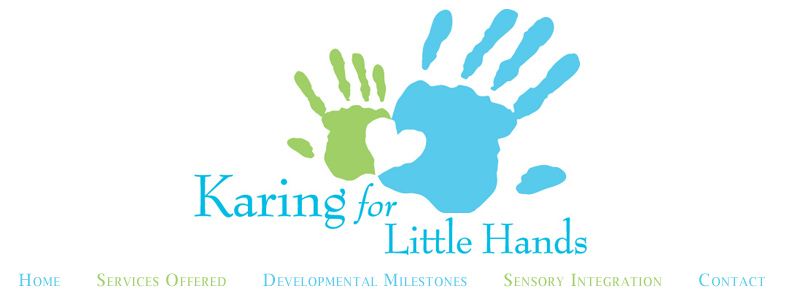
Sensory integration is the brain’s ability to take in, process, organize and integrate sensory input from the seven senses, (sight, sound, smell touch, taste, vestibular/ movement and the pull of gravity, Proprioception/body awareness) in order to elicit a purposeful goal directed motor or muscular response. Sensory integration is a normal process of the central nervous system. It is how we perceive our environment and the people and physical objects in the environment, how we relate our body to them, as well as how they relate to each other. Sensory integration provides a foundation for more complex learning and behavior. If a child has good sensory motor processes early, he will have an easier time learning cognitive and social skills later.

Sensory integrative/processing disorders are a set of conditions caused by an insufficient ability of the central nervous system to take in, register, modulate, perceive and/or combine sensory experiences from the environment around us. For the child with Sensory Integrative disorders the neural messages become disorganized as they travel towards the higher brain centers. These messages may become overly-amplified or diminished and are un-usable. The senses affected include any or all of the following:
Vestibular is the sense of movement. It includes the pull of the earth’s gravity and position in space. This sense allows us to maintain our balance and upright posture. It is closely involved with our visual system, allowing us to judge our motion in relation to objects around us.
Tactile is the sense of touch from all over the body including inside the mouth.
Proprioception is the internal sense from muscles and joints; the basis of muscle memory. This sense allows us to know the position of our body parts without looking at them. It also tells us how much force or speed is required to care out a task. We use our sense of Proprioception when we walk up familiar stairs in the dark, or lift a brick verses a feather.
Auditory is the sense of hearing, the ability to perceive different sound wave frequencies and the ability to perceive, organize and sequence pieces of sound that make up a word.
Visual is the sense of seeing. This not only includes acuity but the ability to perceive brightness of light, spatial orientation, form, vertical versus horizontal, color, shape and direction.
Olfactory and Gustatory are our senses of smells, odors and tastes and our perception of the intensity of them. Under-reactive individuals may seek food with excessive salt, sweetness or spice while over-reactive people may only tolerate very bland or a small repertoire of foods.

There a four major sub-types of sensory integration/ processing disorder:
1. Sensory Modulation dysfunction
2. Developmental dyspraxia
3. Postural-Bilateral Integration dysfunction
4. Generalized dysfunction (impairments in all areas)
Sensory Modulation Dysfunction is the inability of the brain to automatically determine what sensory input is important at a precise time. Children with this disorder are not able to filter out unimportant sensory input or regulate how much sensory input is perceived at one time. Their brains may interpret a tickling feather as painful, a conversational voice as too loud or a small amount of movement as making them dizzy. The smell or taste of food may actually make them nauseous and vomit. At other times, the opposite can happen. The child may seem sluggish or unaware of sensory stimuli. A bad fall does not make them cry or they can spin circles and not feel dizzy. They may seem to crave intense sensory experiences.
Developmental Dyspraxia is a type of coordination disorder where the child is unable to visualize and “figure out”, or plan new or skilled movements. These movements can be large muscle actions like riding a bike or doing a cartwheel or small fine motor movements like writing, cutting or using utensils to eat. A child with a milder impairment may have a mental picture of what they what to do but cannot execute the body positions and movement sequences to accomplish it. Dyspraxic children show underlying patterns of impairment in the detection, organization and discrimination of sensory information from the tactile, vestibular and proprioceptive senses.
Postural-Bilateral Integration dysfunction is an impaired ability to use the two sides of the body together. Children with this disorder have immature developmental reflexes and core muscle patterns. They have a tendency not to cross midline and do not establish a dominant hand. These children have confusion about space, distances and directionality. They confuse “b” and “d” or “m” and “w” and have difficulty with skills requiring alternating limb movements such as riding a bike, roller skating or two-handed skills like buttoning a shirt or cutting out shapes.

What are some things that might indicate a Sensory processing disorder?
- Takes a long time to learn a new task/skill
- Seems clumsy, has too many accidents
- Demonstrates unpredictable behavior in social situations, behavioral problems at school
- Has trouble with handwriting
- Displays short attention span
- Seems overly dependent on schedule or routine and/or easily upset with minor change
- Exhibits “picky" eating behavior
- Appears overly colicky or fussy, Acts restless/fussy when held
- Acts impulsively or explosively, Angers easily or frequently accused of acting out
|

